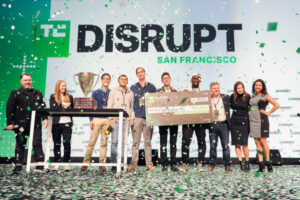Inbound marketing is a methodology that allows your potential customers to find you more easily on the internet, knowing your brand, products, and services through valuable content specially oriented to their questions, doubts, and needs. According to Bluehat Marketing, it requires the use of content marketing techniques, SEO, SEM, email marketing, and social media in combination with advanced marketing automation and web analytics tools.
The Methodologies
Although it is based on techniques used by other methodologies, the value of inbound marketing is, on the one hand, in how it manages them based on a software tool that facilitates working with all of them in an integrated way. On the other hand, it is also in a philosophy that values the customer and puts him at the center of the entire process. Inbound marketing was born in 2005, by Brian Halligan and Dharmesh Shah. They founded Hubspot and created the software platform that allows the methodology to be deployed more efficiently, facilitating the management of the different tools and the analysis of results.
How Inbound Marketing Works
The “inbound methodology” is divided into four major stages: attracting the customer, converting the prospect, closing the sale, and fostering loyalty. They emphasize each of the stages of the purchase cycle of your prospects (discovery, consideration, and decision), plus a fourth stage that takes into account the after-sales. This is because, for inbound marketing, loyalty is very important in the consolidation of a business.
Below we explain a little more about each stage.
Attracting Customers
This stage has to do with positioning your company on the internet and attracting your ideal clients to find your content, and through them, your products and services. For this, an optimization of the digital infrastructure of your company is carried out, aimed at achieving a significant increase in traffic to your website. In addition, a content plan is developed especially aimed at your buyer personas, in order to capture their attention and help them find a solution according to their needs.
Converting Prospects
Once you have managed to attract your ideal customers, you work to convert them into leads. Here different types of resources specially designed to achieve conversion come into play, such as lead flows, chat bots, CTAs, and forms, usually associated with downloadable content offers or special promotions. These tools make the people who come to your website voluntarily share their data (name, email, phone, etc.) and consumption habits, joining your contact base. The intelligent segmentation of HubSpot helps, in this instance, the marketing and sales teams to prioritize the most interesting leads.
The Closing Phase
In the closing stage, efforts are focused on completing the sale. For this, it seeks to align the work of the marketing and sales teams, so that it is possible to maximize the results of the entire strategy. At this point, the CRM is used as a meeting place where each other can add all the relevant data to achieve a more precise level of personalization in business relationships. The B2B sales process usually involves long negotiations in which the purchase decision is subject to a chain of people within the company. In this exchange process, the contextual knowledge provided by a CRM is decisive to fully understand the problem of each client, and provide a truly focused solution.
Customer Loyalty
Loyalty is a central aspect of inbound marketing. This means that, with inbound, the relationship with customers does not end with the purchase, but from there you work to retain them and convert them, little by little, into promoters of your company.
Conclusion
The inbound method is based on delivering an exceptional customer experience. In addition, users now have much higher expectations of companies and the attention they receive. Therefore, it is much more important to interact with them in a correct way, delight them and help them achieve success. If you succeed, they will continue to buy your products or services, build a long-term bond with you, recommend your company to their friends, and tell everyone that they are fans of your brand. In short, what it is about is working so that customers become amplifiers of your brand and add value to your business.








